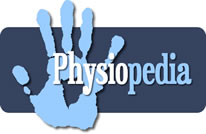New Study Shows Manual Physical Therapy and Exercise ProducesSignificant Improvements in Neck Pain
ALEXANDRIA, VA, December 12, 2008 — The American Physical Therapy Association (APTA) is urging patients with musculoskeletal pain to consider treatment by a physical therapist, in light of a new federal survey showing that more than one-third of American adults and nearly 12 percent of children use alternative medicine - with back and neck pain being the top reasons for treatment. Results of the 2007 survey of more than 32,000 Americans were released December 11 by the National Institutes of Health's National Center for Complementary and Alternative Medicine.
According to APTA, physical therapy offers an evidence-based, time-tested solution to these common conditions in comparison to alternative treatments.
For neck pain, for example, a recent study published in the medical journal Spine found that when patients received up to six treatments of manual physical therapy and exercise, they not only experienced pain relief, but were also less likely to seek additional medical care up to one year following treatment.
"This study, demonstrating the efficacy of physical therapy for a condition as widespread as neck pain, is particularly relevant in today's challenging economic environment," according to the study's lead researcher and APTA spokesman Michael Walker, PT, DSc, OCS, CSCS, FAAOMPT. "The Kaiser Foundation, for instance, recently found that more than half of all Americans are not taking prescribed medication and postponing needed medical care in an effort to save money. It is important for consumers to know that there are effective, conservative solutions such as physical therapy available.1"
Walker's study compared the effectiveness of a three-week program of manual physical therapy and exercise to a minimal intervention treatment approach for patients with neck pain.
Study participants consisted of 94 patients with a primary complaint of neck pain, 58 (62%) of whom also had radiating arm pain. Patients randomized to the manual physical therapy and exercise group received joint and soft-tissue mobilizations and manipulations to restore motion and decrease pain, followed by a standard home exercise program of chin tucks, neck strengthening, and range-of-motion exercises. Patients in the minimal intervention group received treatment consistent with the current guidelines of advice, range-of-motion exercise, and any medication use prescribed by their general practitioner. Patients did not have to complete all six visits if their symptoms were fully resolved.
Sample exercises to relieve neck pain can be found on the APTA Web site, www.apta.org/consumer.
Results show that manual physical therapy and exercise was significantly more effective in reducing mechanical neck pain and disability and increasing patient-perceived improvements during short- and long-term follow-ups. These results are comparable with previous studies that found manual physical therapy and exercise provided greater treatment effectiveness (Hoving et al, 2002)2 and cost effectiveness (Kothals-de Bos et al, 2003)3 than general practitioner care.
"Physical therapist intervention can be an effective, high-value, conservative solution for treatment of musculoskeletal pain," said Walker.
"Physical therapists can help individuals improve mobility and quality of life without expensive surgery or the side effects of pain medication. We give patients the tools they need, such as the home program we used in the study, to help them prevent or manage a condition in order to achieve long-term health benefits."
Physical therapists are highly-educated, licensed health care professionals who can help patients reduce pain and improve or restore mobility — without expensive surgery or the side effects of medications. APTA represents more than 70,000 physical therapists, physical therapist assistants, and students of physical therapy nationwide. Its purpose is to improve the health and quality of life of individuals through the advancement of physical therapist practice. Learn more about conditions physical therapists can treat at www.apta.org/consumer, and find a physical therapist in your area at www.findapt.us.
1 http://www.kff.org/kaiserpolls/h08_posr102108pkg.cfm
2 Hoving JL, Koes BW, de Vet HC, van der Windt DA, et al. Manual Therapy, Physical Therapy, Or Continued Care by a General Practitioner for Patients with Neck Pain. Ann Intern Med 2002;136 (10):713-722
3 Korthals-de Bos IB, Hoving JL, van Tulder MW, et al. Cost effectiveness of physiotherapy, manual therapy, and general practitioner care for neck pain: economic evaluation alongside a randomised controlled trial. BMJ 2003;326 (7395):911





